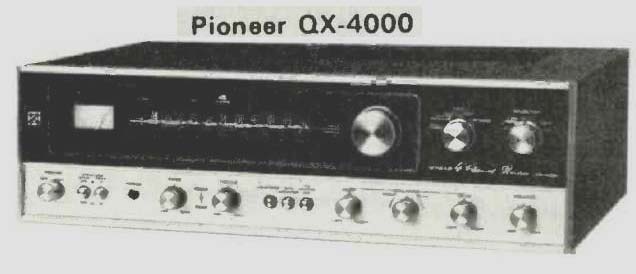
Pioneer QX-4000
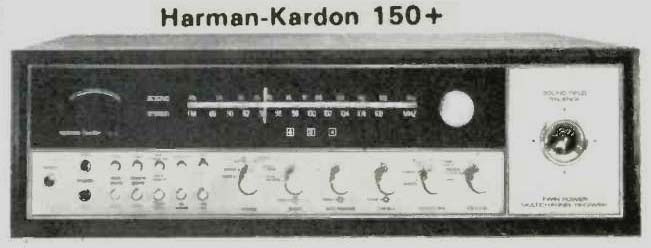
Harman-Kardon 150+
Most of the new quadraphonic receivers have quite elaborate decoder sections with provision for more than one system. A good example is the Pioneer QX-4000 which has switch positions for SQ and "regular matrix". The latter gives a kind of surround sound which some people prefer when playing old 2-channel discs. Figure 1 shows the basic arrangement of the decoder in the regular matrix mode. Signals applied from the left channel are formed into L and -L (representing a phase difference of 180 degrees) by the 3 transistors Q1, Q3 and Q5. These outputs are taken to a phase-shifter network with Q7 and Q11 and then to two emitter-followers, Q15, and Q17. Output is then left-front and left-rear. The right channel input is taken through a similar network emerging at the other two emitter followers Q20 and Q18 (right-front and right-rear). The resistor R1 gives some blending between front channels and R2 blends the rear channels.
Figure 2 shows what happens in the SQ mode: the phase shifter outputs are separated by 90 degrees as before, but a two-transistor network is inserted in the left-rear and right-rear circuit and the outputs are taken to another pair of emitter-followers, Q16 and Q19. Front and rear channels are bridged by R3 and R4 thus improving separation by cancelling some out-of phase information. Model QX-4000 uses a total of 71 transistors plus 30 diodes and 2 IC's. Power output is quoted as 4 x 20 watts (continuous) into 4 ohms and 4 x 15 watts at 8 ohms. FM sensitivity is listed at 2.2 µV and AM at 15 µV. Price $349.95.
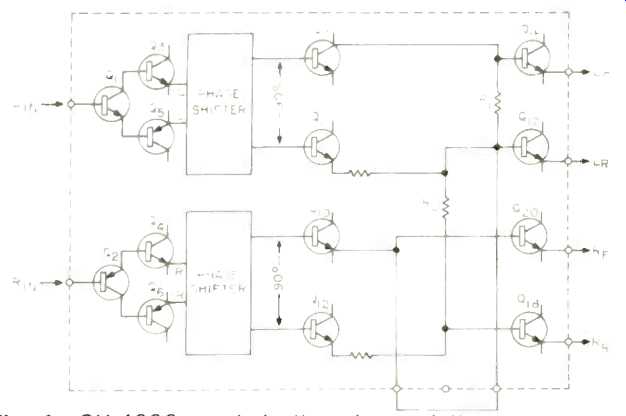
Fig. 1--QX.4000 matrix in "regular mode".
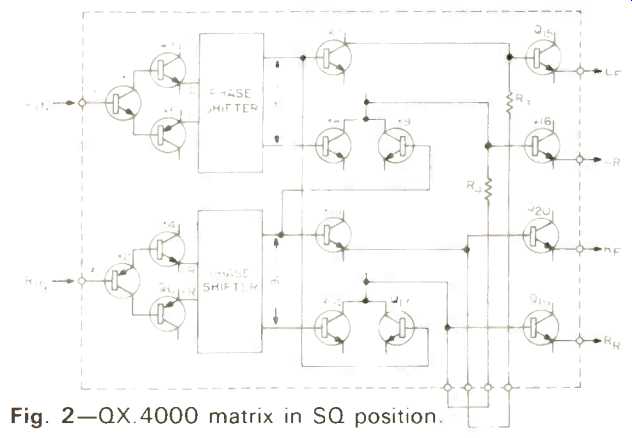
Fig. 2--QX.4000 matrix in SQ position.
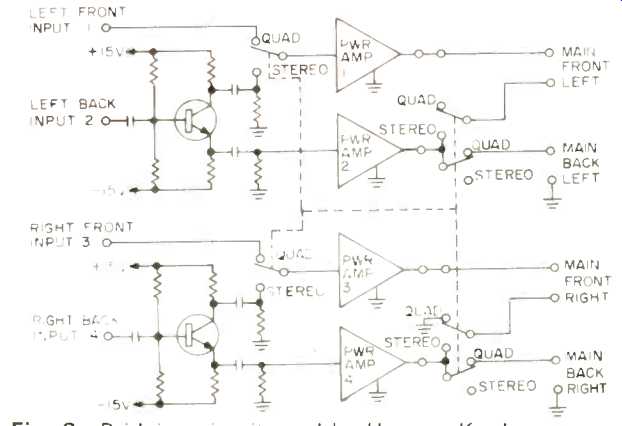
Fig. 3--Bridging circuit used by Harman-Kardon.
Harman-Kardon have a range of quadraphonic receivers which are called "Multichannel"-all using the new strapping technique of paralleling the four channels for two channel operation. Actually, the idea is not really new as Bell Labs published a paper on the subject many years ago. However, H.K. were one of the first to use it for this particular application. The four models in the Multichannel range are designated the 50+, 75+, 100+, and 150+. Because of the bridging circuit, the amount of power per channel in the stereo mode is more than double the power available per channel in the four-channel mode. Figure 3 shows the basic arrangement and it will be seen that one amplifier output stage is virtually in series with the other in the two-channel function. Remote speaker switching is not shown for the sake of clarity. The two transistors at the input act as phase-changers in the stereo mode.
All these receivers incorporate SQ matrix decoders, discrete four-channel tape facilities and provision for quadraphonic headphones. The three larger models have some additional features such as provision for a Dolby unit, two tape monitors, twin power supplies and a `joystick" balance control. Prices range from $249.95 for the 50+ to $599.95 for the 150+.
"The Fisher Studio" range of quadraphonic receivers use a very similar 2-4 channel bridging circuit to the Harman-Kardon series. The largest receiver in the range is the 504 which is rated at 4 x 50 watts continuous power into 4 ohms or 4 x 40 watts at 8 ohms. Two Light Emitting Diodes (LEDS) are used to indicate 2 or 4 channel operation. A "Joystick" balance control is employed together with an Audio Display Circuit. The output of all four amplifiers is connected to logarithmic amplifiers which in turn drive four light bulbs (see fig. 4.) These are mounted behind a small square on the front panel thus giving visual indication of balance. Other unusual features include a gain-controlled MOSFET Rf amplifier and a "Lumped Selectivity" i.f. stage.
What is "lumped selectivity"? Briefly, it is a method of design where the selective circuits are placed at the i.f. input stage in one block so to speak. The normal approach is to divide the selective circuits among several stages but Fisher claims that their "one block" system gives a wider bandwidth and better capture ratio. A Multi-pole ladder filter is used as the main selective element. The FM detector is a quadrature type and it is combined with the limiter stages, meter amplifier and amplifying stages in a single IC. The MPX section employs a Phase Locked Loop circuit-also using an IC. More than usual attention has been given to the broadcast band and the 504 incorporates a dynamic noise limiter.
All the receivers--304, 404, and 504--use the same basic circuit but only the 504 has the AM noise limiter and some other refinements. All have built-in SQ decoders. Power output of the 304 is 4 x 20 watts at 4 ohms and the 404 is rated at 4 x 36 watts. All have FM sensitivities of 1.8 µV and a capture ratio of 1.2 dB. Prices are $299.95, $399.95 and $399.95.
Tandberg, who have long had an enviable reputation for tape recorders recently introduced an AM/FM receiver. This is Model TR 1020 and it is rated at 2 x 40 watts into 8 ohms and 2 x 50 watts into 4 ohms. FM sensitivity is given as 2 µV with a capture ratio of 1.8 dB. As you might expect, special attention has been paid to the needs of the tape recording enthusiast. There are input and output sockets for two tape recorders and on the front panel concealed by the hinged lower part, is another tape recorder outlet designated "Tape 3". This particular output is taken through the tone and filter controls-a useful feature for the enthusiast. A MOSFET front end is used for both AM and FM bands and there are separate power supplies for each channel. As is customary with many European receivers, the filter circuits are very efficient. The rumble, or low frequency filter attenuates at 12 dB per octave below 70 Hz and the high frequency filter operates at 8 kHz with a choice of two slopes: 3 dB per octave or 12 dB. Figure 5 shows the arrangement: C I and C2 form part of the two-step low frequency filter and R2, R3, C4 and C5 are part of the high frequency network. R4 provides negative feedback necessary to sharpen up the attenuation and reduce distortion. We hope to publish a full scale review of the TR 1020 in the near future. The price is $429.90.
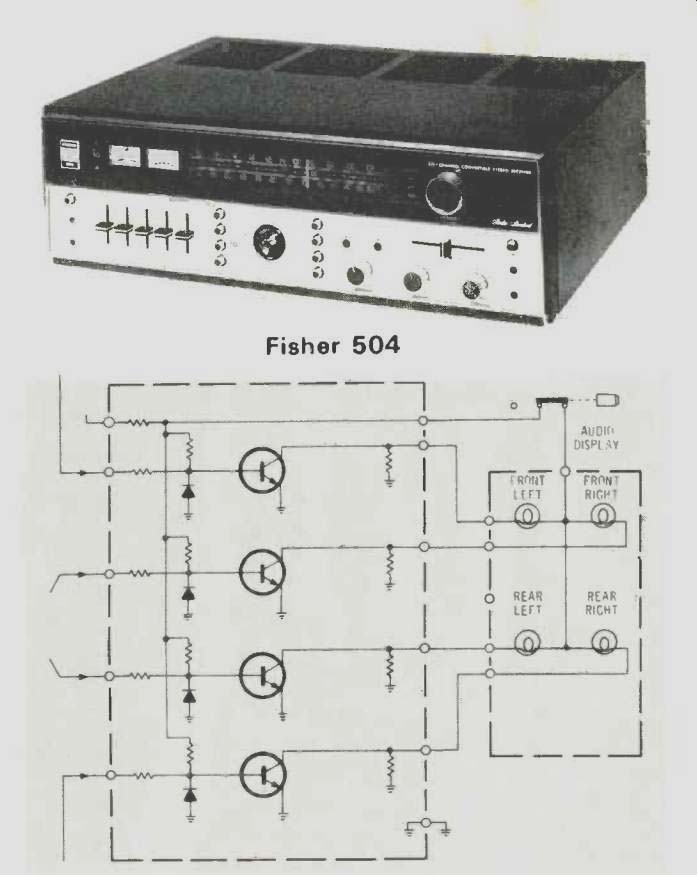
Fig. 4--Fisher 504 Audio Display amplifier
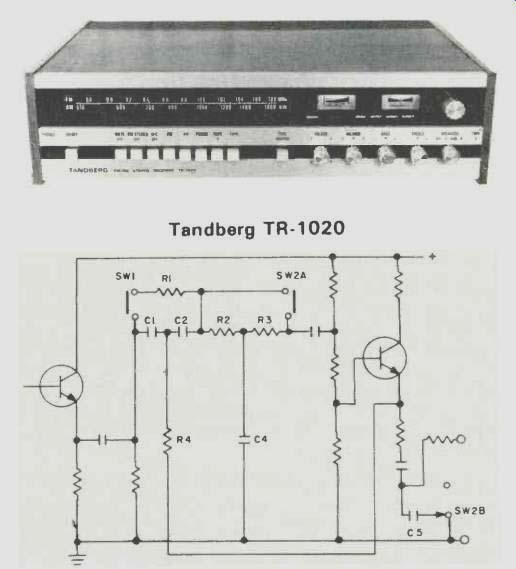
Fig. 5-High and low pass filter circuit used by the Tandberg TR 1020.
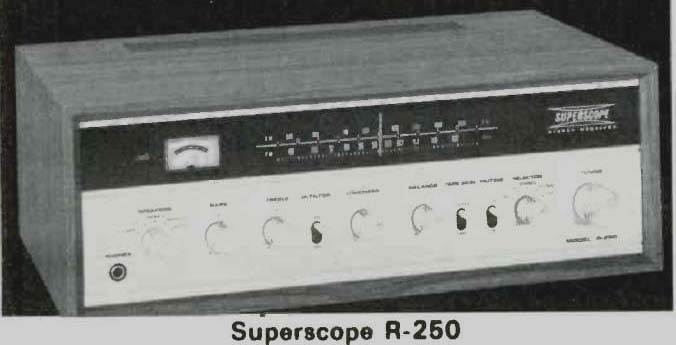
Superscope R-250
Sony-Superscope have a whole new range of inexpensively priced receivers, tuners and amplifiers. Model R-250 AM/FM receiver is typical. It has a rated power output of 10 watts per channel, (continuous, rms) and the FM sensitivity is quoted as 2.5 µV. Capture ratio is 2 dB and 58 dB of quieting is claimed for an input signal of 100 µV. In spite of the low price, the R-250 has a number of refinements like a tape monitor switch, low-pass filter, FM muting switch, ceramic IF filter and so on. An ideal receiver for the beginner. Price $199.95.
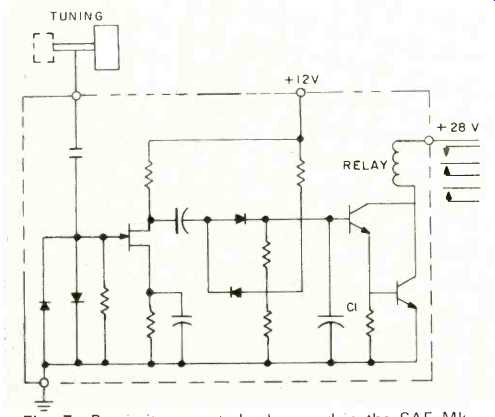
Fig. 7--Proximity operated relay used in the SAE Mk.
The SAE Mk. Six FM tuner has some very interesting features. It uses as digital readout display with four Nixie tubes, a 3 inch rectangular scope for displaying multi-path distortion, center-of-channel tuning, Lissajous displays, a 15-pole Butterworth i.f. filter circuit with toroid coils and an 8-stage IC limiter. The front end employs a four-gang tuned circuit with two FETS. In order to display the signal with any degree of accuracy it is necessary for the display signal to be a logarithmic function of the input. This is not easy to achieve because of the normal limiting and so a separate channel has been incorporated for this purpose. One of the most intriguing features of the SAE Six is the touch-sensitive tuning knob which automatically switches on a correct display when the user is tuning and then reverts back to an audio signal. This is accomplished by a relay circuit shown in figure 7. The two diodes at the input prevent too high signals being applied to the FET. The capacitor C 1 is 10 microfarads and it gives a small delay making relay action more positive. Mk Six specifications include a sensitivity of 1.5 µV, harmonic distortion of less than 0.1%, alternate channel selectivity of 140 dB and a rear-channel jack for 4-channel MPX. Price is $950.00.

Sequerra Model 1
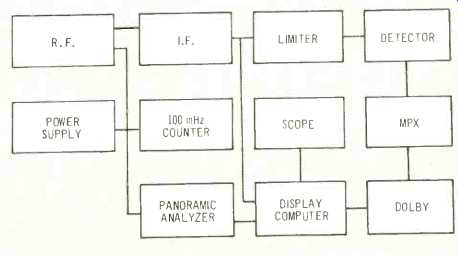
Fig. 8--Block diagram of the Sequerra Model 1 tuner
The Sequerra FM tuner is probably the most ambitious tuner to appear on the scene. Some of the criteria were discussed in our January, 1972 issue in an article entitled, "The Perfect FM Tuner?". Figure 1 shows the basic block diagram. The Rf front end is a differential processor using a push-pull balanced FET mixer which is said to handle very large signals without causing cross-modulation. This mixer has two outputs, one going to the FM i.f. filter and the other to the panoramic i.f. filter. Varactors are used for tuning in conjunction with a manual potentiometer and a positive-negative ramp for automatic frequency scan. The i.f. filter is an 18 pole papoulis type which gives optimum phase linearity with minimum bandwidth. It has a dynamic signal handling capacity of better than 120 dB. The FM limiter is a six stage broad band RC coupled configuration having a bandwidth of over 50 mhz. It is arranged in gain blocks of +20 dB which allow the vertical components to be displayed in a logarithmic function. Detector is a switching type.
The MPX decoder is similar to the one used by the old 10b-but with some stability and separation improvements.
The panoramic spectrum analyzer is a system which displays all of the signals for 1 mhz above and 1 mhz below the station tuned in. This kind of "window" allows the user to rotate the antenna for best reception in terms of multipath or signal to noise. The counter displays the frequency of the station tuned (note that the Sequerra tuner is not a digital tuner as such). Oscilloscope displays include panoramic, tuning and audio vectors and the screen size is 4 1/2 inches flat.
Finally, the power supply is fully stabilized. Specifications include 2µV sensitivity, 0.1% THD at 100% modulation and 50 dB separation at 1 khz. Price: $1600.00.
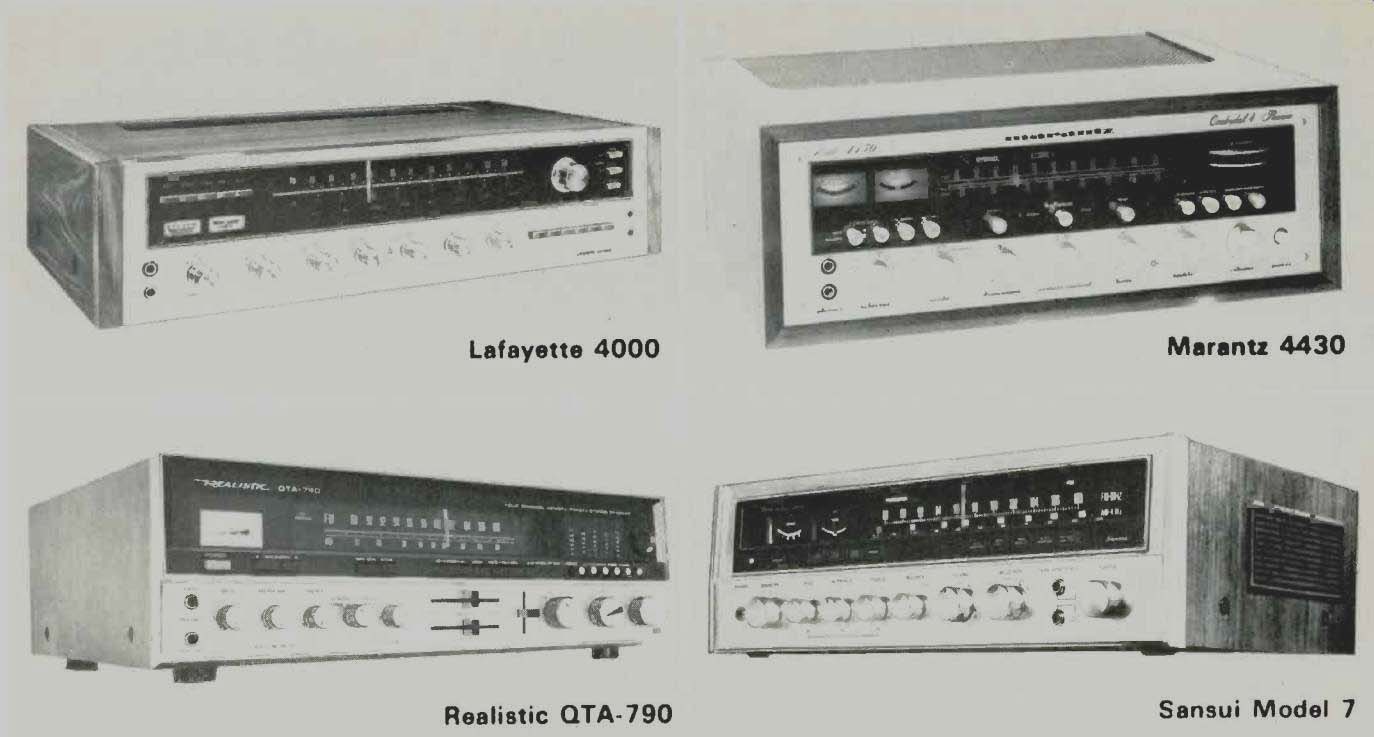
above: Lafayette 4000; Realistic QTA-790; Marantz 4430; Sansui Model 7
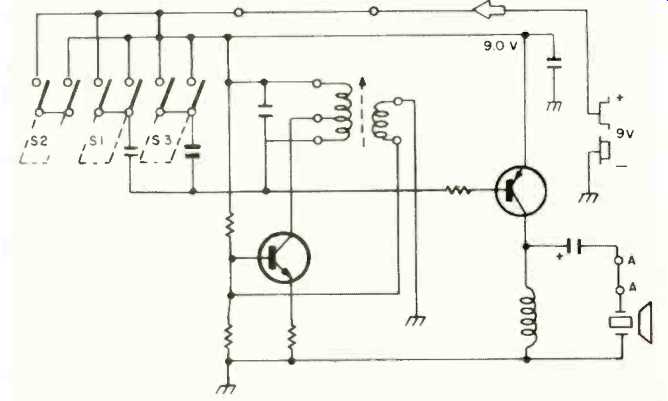
Fig. 6-Remote control transmitter used in the Realistic QTA-790.
The new Realistic AM/FM quadraphonic receiver from Allied uses no less than 103 transistors-plus two more in the remote control unit! Model number is QTA-790 and power output rating is 4 x 36 watts continuous at 8 ohms.
FM sensitivity is given as 2.2 µV with a capture ratio of 1.5 dB. Bass, midrange and treble tone controls are provided and other features include tape recorder dubbing jacks, AFC switch, high and low-pass filters and push-buttons for 5 preset FM stations. Matrix is SQ and a second position called "Stereo All" parallels left-front with left-rear channels and right-front with right-rear. The remote control system uses an ultra-sonic transducer as shown in figure 6. Pre-selected stations can be tuned sequentially and two other buttons control the volume level. The control receiver uses 21 transistors and a small motor which drives a volume control. Price of the QTA-790 is $549.95 and a unit is now being tested.
The Sansui Model Seven is a medium power receiver with several unusual refinements. Three tone controls are provided-bass, midrange and treble. It has provision for connecting a Dolby unit, two phono pickups, sockets for a 4-channel adaptor, no less than 3 pairs of speakers (A, B or C, A+B, A+C and Off) and for the tape enthusiast-two tape monitor circuits. Two tuning meters are provided-one for center-channel, one for signal strength. Rated power output is 41 plus 41 watts continuous at 8 ohms and 55 plus 55 watts at 4 ohms. FM sensitivity is given at 1.8 µV with a capture ratio of 1.5 dB. Price $459.95.
The Lafayette LR-4000 incorporates a full logic SQ decoder in addition to a surround sound matrix called a "Composer" circuit. Like the Pioneer "regular matrix" system, this is intended for use with ordinary two-channel program sources. Other features of the LR-4000 include a PLL (Phase Locked Loop) FM detector, 2 tape monitor switches, front and rear channel headphone outlets, Bass, Midrange and Treble tone controls and a Remote speaker selector for 4 channels. FM sensitivity is quoted as 1.65 µV and power output at 47.5 watts per channel (continuous). A detailed review of this model will appear shortly. Price: $499.95.
The Marantz 4430 has several interesting features including an optional remote control, Model RC-4, and provision for plug-in SQ module. The built-in decoder is a general purpose type called Varimatrix (not to be confused with the new Sansui semi-logic Vario-Matrix).
The cable-connected remote control operates four-channel balance, volume and loudness.
Other features of the 4430 are Gyro-Touch tuning, switching for headphones and eight loudspeakers, separate tone controls for front and rear channels, two illuminated tuning meters, tape monitoring for two 3-head stereo or four-channel tape decks and a "dimension" control for optimum four-channel effect. Power rating is 4 x 30 watts continuous power. FM sensitivity is said to be 1.7 IN with a capture ratio of 1.6 dB. Price is $599.95.
Shown on the right is the Heath AJ-1510 FM tuner. This is a true digital tuner as the tuning frequencies are determined by a crystal controlled oscillator with the appropriate dividers. In other words the digital readout does not merely indicate the frequency tuned by a manual control. In fact the AJ-1510 has no tuning knob! It was reviewed in some detail in the May 1972 issue and the reviewer, Len Feldman said, "The ultimate tuner? Well, if it isn't, it will do until someone comes up with something better". Specifications include: IHF sensitivity better than 1.8 µV, THD less than 0.3%, Channel frequency accuracy better than .005%, AM suppression 50 dB plus. Actual test figures were somewhat better--1.6 µV sensitivity and 0.18% distortion. There are three methods of station selection, auto-sweep, pushbutton or punched card for three preprogrammed selections.
The price of the AJ-1510 is $539.95 as a kit. Heath have just introduced a medium priced receiver-Model AR1302 which costs $239.95. Power rating is 20 watts per channel into 8 ohms and features include two ceramic i.f. filters, plug-in modular design to speed up kit-building and fully assembled and aligned FM tuning section. There are two tuning meters, preset input controls and a built-in test circuit. Slide type controls are used for bass, treble, balance and volume and the panel has "Black Magic" lighting.
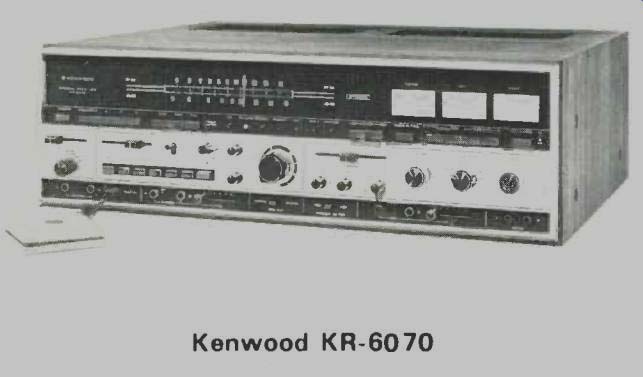
Kenwood KR-6070
Finally, for the man (or woman) who really wants something different: an AM/FM tuner with almost everything on board except the kitchen sink-to use a British expression! The receiver is the Kenwood KR-6070 "Jumbo" model which is called, "an electrical marvel that permits the widest scope of musical fun and creativity." It numbers among the attractions an electronic rhythm composer, reverb unit, front panel jacks for one or two electric guitars, multiple mixing for "live" and source sound, multi-presence control and an array of level, frequency, balance and tone controls. The rhythm composer can give you bass drum, conga, claves, snare drum, cymbal in any of twelve rhythms. The reverb unit has an echo delay time of 40 milliseconds and a duration of two seconds. It can be switched to separate output terminals to give a quasi-4-channel sound with an external amplifier. The 6070 has input sockets for two phono pickups, two tape decks and output for four sets of speakers. I almost forgot--power output is 50 watts per channel. The price is $549.95.
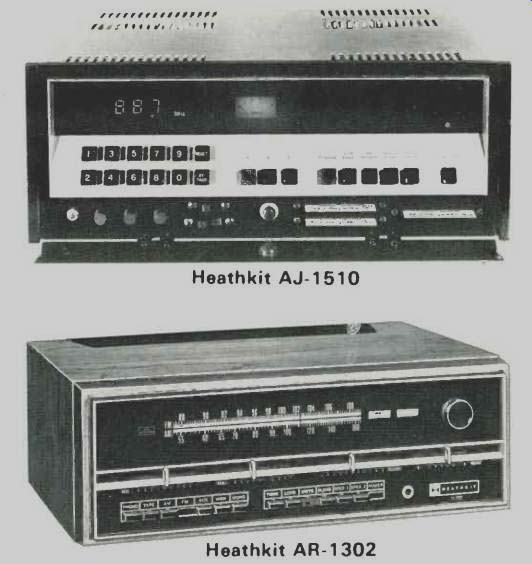
Heathkit AJ-1510; Heathkit AR-1302
The Sony ST-5555 is called "a spectrum scanner tuner" and it uses a total of 100 illuminated push buttons-one for each channel. Tuning is controlled by a quartz reference frequency oscillator and PLL (Phase-Locked- Loop) circuit which gives better than 99.995% tuning accuracy irrespective of temperature. The tuner can be set to automatically sweep the entire FM band, stopping at all receivable stations, or the scanning circuit can be programmed. During the scanning cycle a memory system can be set to illuminate the appropriate buttons showing all stations receivable with good signal to noise. The memory device is a computer type array using the new Sony MAOS (Metal Alumina Oxide Semi-Conductor) and the memories are not erased when the tuner is switched off. When it is switched on again, the MAOS memory automatically brings in whatever station had been tuned in before.
No tuning meter is used-obviously-but an interesting five-step digital indicator is employed. Oscilloscope monitoring outputs are on the rear panel-useful for multipath indication.
Outputs for quadraphonic decoders are also provided-also a headphone output with level control. The price is not yet fixed, but it will probably be around $1000.00.
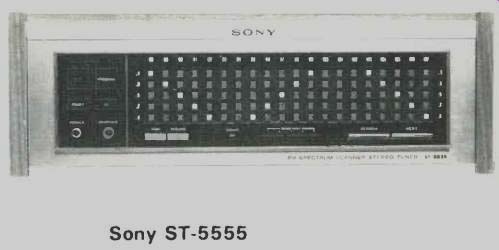
Sony ST-5555
=============
(Audio magazine, Jan. 1973)
Also see:
New Specs for the New Tuners (Jan. 1973)
Pioneer SX series receivers (ad, Jan. 1973)
= = = =